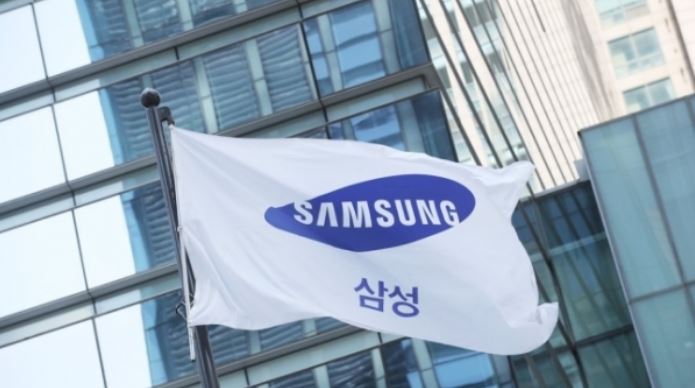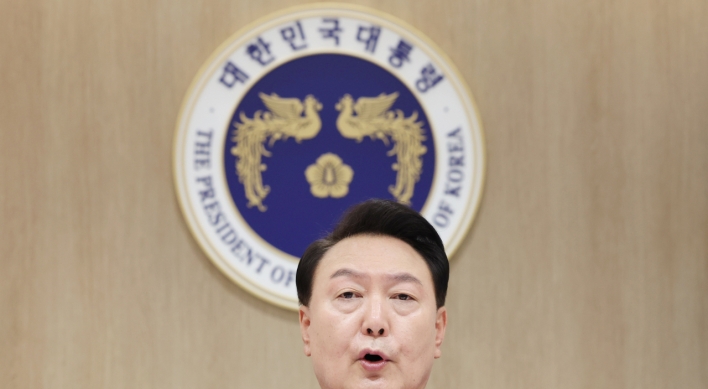Samsung soars on pandemic-boosted demand for chips
Tech giant’s operating profit rises 23.5% in Q2, explains plan for DDR5
By Lim Jeong-yeoPublished : July 30, 2020 - 09:04

Sustained by the sturdy demand for chips during the pandemic, Samsung Electronics on Thursday reported a consolidated second-quarter operating profit of 8.15 trillion won ($6.8 billion), up 23.5 percent on-year, while revenue slipped 6 percent to 52.97 trillion won.
In its second quarter report, Samsung cited lackluster demand for smartphones and other devices for the slight revenue fall, and credited strong demand for memory chips, seasonal home appliance sales and a one-off gain of display business for the better-than-expected second-quarter performance. It had also cut marketing costs for efficient budget execution.
Meanwhile, when the optimistic earnings were announced, Samsung Electronics’ Vice Chairman and de facto head Lee Jae-yong visited the company’s operation site in Onyang, South Chungcheong Province, to check in on the next-generation semiconductor packaging technologies and business strategies.
“We have to stake our leading position in the post-COVID-19 future. This is not a time to hesitate. We must challenge ourselves to make the leap. We must persevere to innovate,” Lee told employees.
This is the second time Lee has visited the Onyang site since August 2019.
According to Samsung, Lee oversaw the packaging technology for semiconductors crucial to artificial intelligence, 5G communications module and high bandwidth memory.
During a conference call earlier in the day, Samsung explained that with more people working from home and studying at home during the COVID-19 pandemic, there was higher demand for memory chips, data centers and personalized computers.
“Despite slow demand and closure of key production sites (amid COVID-19 headwinds), we were able to enforce a wide range of timely and effective measures through our differentiated global supply chain to ensure our customers have reliable access to our services,” said Seo Byung-hoon, head of investor relations.
The overall demand for display panels decreased. In the small display segment, closure of retails shops amid the pandemic led to dampened sales of smartphones. In the large display segment, reduced global sports event such as the Tokyo Olympics and the Euro 2020 led to a decrease in TV sales. A growth in monitor sales and a one-off gain alleviated the loss by a margin.
Lower demand for mobile memory resulted in weaker NAND flash growth. This was also fueled by an inability to fulfil demand in some application areas. System LSI also reported lower earnings amid weakened mobile market, the company noted.
The company said it expects a gradual recovery in the second half of the year, on the back of a rebound in consumer demand for new, innovative flagship smartphone models of Galaxy Note and Fold, and other consumer electronics, such as game consoles.
Its subsidiary Harman’s operating loss continued due to unfavorable environment in the global automotive industry but Samsung said it expects a turnaround as consumer audio sales grow.
The consumer electronics business will seek earnings growth by focusing on premium product lines such as the quantum-dot light-emitting diode products and seasonal home appliance sales.
Regarding the semiconductor foundry business -- contract manufacturing -- Samsung stomped out market speculations that it is bypassing the 4 nanometer process to directly foray into the more intricate 3 nm process.
The company said it has begun mass production of 5nm products and is developing 4nm process technology.
Regarding Double Data Rate 5 DRAM, Samsung said it expects to unveil the next-generation memory in the second half of this year that will fit the recently established standardization. The company expects DDR5 to become the market leader around the second half of 2023 to first half of 2024.
Samsung’s financial statement is a consolidated information of the performance of its consumer electronics, information technology and mobile communications, device solutions and display panel businesses.
The report contains Samsung’s internal transactions between the business segments.
Since 2020, the CE segment includes the performance of Samsung’s medical device business.
Harman’s revenue and operating profit is recorded according to Samsung’s fiscal year and reflects the acquisition costs.
Samsung made a facility expansion investment in the second quarter amounting to 9.8 trillion won. Broken down, 8.6 trillion won was used for semiconductor business and 800 billion won for display. The accumulated internal investment the company has made in the first half of 2020 reaches 17.1 trillion won, which is 6.4 trillion won more than the same period a year before.
“We will continue to invest in key business areas such as semiconductors, display and smartphones, as well as in emerging areas such as artificial intelligence, 5G, software and automotive applications,” IR head Seo said.
By Lim Jeong-yeo (kaylalim@heraldcorp.com)
In its second quarter report, Samsung cited lackluster demand for smartphones and other devices for the slight revenue fall, and credited strong demand for memory chips, seasonal home appliance sales and a one-off gain of display business for the better-than-expected second-quarter performance. It had also cut marketing costs for efficient budget execution.
Meanwhile, when the optimistic earnings were announced, Samsung Electronics’ Vice Chairman and de facto head Lee Jae-yong visited the company’s operation site in Onyang, South Chungcheong Province, to check in on the next-generation semiconductor packaging technologies and business strategies.
“We have to stake our leading position in the post-COVID-19 future. This is not a time to hesitate. We must challenge ourselves to make the leap. We must persevere to innovate,” Lee told employees.
This is the second time Lee has visited the Onyang site since August 2019.
According to Samsung, Lee oversaw the packaging technology for semiconductors crucial to artificial intelligence, 5G communications module and high bandwidth memory.
During a conference call earlier in the day, Samsung explained that with more people working from home and studying at home during the COVID-19 pandemic, there was higher demand for memory chips, data centers and personalized computers.
“Despite slow demand and closure of key production sites (amid COVID-19 headwinds), we were able to enforce a wide range of timely and effective measures through our differentiated global supply chain to ensure our customers have reliable access to our services,” said Seo Byung-hoon, head of investor relations.
The overall demand for display panels decreased. In the small display segment, closure of retails shops amid the pandemic led to dampened sales of smartphones. In the large display segment, reduced global sports event such as the Tokyo Olympics and the Euro 2020 led to a decrease in TV sales. A growth in monitor sales and a one-off gain alleviated the loss by a margin.
Lower demand for mobile memory resulted in weaker NAND flash growth. This was also fueled by an inability to fulfil demand in some application areas. System LSI also reported lower earnings amid weakened mobile market, the company noted.
The company said it expects a gradual recovery in the second half of the year, on the back of a rebound in consumer demand for new, innovative flagship smartphone models of Galaxy Note and Fold, and other consumer electronics, such as game consoles.
Its subsidiary Harman’s operating loss continued due to unfavorable environment in the global automotive industry but Samsung said it expects a turnaround as consumer audio sales grow.
The consumer electronics business will seek earnings growth by focusing on premium product lines such as the quantum-dot light-emitting diode products and seasonal home appliance sales.
Regarding the semiconductor foundry business -- contract manufacturing -- Samsung stomped out market speculations that it is bypassing the 4 nanometer process to directly foray into the more intricate 3 nm process.
The company said it has begun mass production of 5nm products and is developing 4nm process technology.
Regarding Double Data Rate 5 DRAM, Samsung said it expects to unveil the next-generation memory in the second half of this year that will fit the recently established standardization. The company expects DDR5 to become the market leader around the second half of 2023 to first half of 2024.
Samsung’s financial statement is a consolidated information of the performance of its consumer electronics, information technology and mobile communications, device solutions and display panel businesses.
The report contains Samsung’s internal transactions between the business segments.
Since 2020, the CE segment includes the performance of Samsung’s medical device business.
Harman’s revenue and operating profit is recorded according to Samsung’s fiscal year and reflects the acquisition costs.
Samsung made a facility expansion investment in the second quarter amounting to 9.8 trillion won. Broken down, 8.6 trillion won was used for semiconductor business and 800 billion won for display. The accumulated internal investment the company has made in the first half of 2020 reaches 17.1 trillion won, which is 6.4 trillion won more than the same period a year before.
“We will continue to invest in key business areas such as semiconductors, display and smartphones, as well as in emerging areas such as artificial intelligence, 5G, software and automotive applications,” IR head Seo said.
By Lim Jeong-yeo (kaylalim@heraldcorp.com)












![[KH Explains] How should Korea adjust its trade defenses against Chinese EVs?](http://res.heraldm.com/phpwas/restmb_idxmake.php?idx=644&simg=/content/image/2024/04/15/20240415050562_0.jpg&u=20240415144419)






